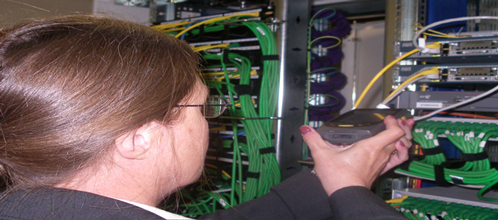INTERVIEW: Peter King "The Role of Walk Around Audits in ITAM"
Peter King is Director at CRC, who are a specialist ITAM VAR.
In a world of electronic audits and ubiquitous broadband you would have thought that a walk around audit of IT Assets was redundant. However it seems the walk around audit, also known as a physical audit or sneakernet is still very much in demand. I spoke to Peter about the role of physical audits in IT Asset Management and in particular how it contributes towards mergers, acquisitions and divestiture activity.
Why do companies still need to do walk around audits?
We are quite often called in to help companies because they require third party verification of their assets.
For example we recently helped a UK government department split one of its entities into two separate government agencies. Our role was to complete a physical audit of all their equipment and then retag assets according to which new agency they were going to be assigned to.
They were under pressure to complete the divestiture as quickly as possible and wanted independent verification to make sure the split was accurate. Prior to our audit, the asset register was stored within their ERP system which they found difficult to maintain and was not seen as a trusted source of information.
An option was to utilise internal resource to complete the audit, but with ten regional offices and pressing time frames outsourcing the walk around audit was the most sensible option. Sending out requests for internal audits to departments, chasing them up and generating results takes time. It also generates inconsistencies as each department interprets the naming conventions on their own terms. We were able to get round quickly with minimal disruption.
Why not use an electronic auditing and inventory tool?
This is the preferred long term solution but it depends on circumstances. The government agency I mentioned above supposedly had a tool already in place but ensuring it has 100% coverage and generating meaningful results in a short space of time can be a political and technical nightmare.
Electronic tools are also limited to network connected devices, some organisations wish to track other assets which are not connected such as phones, docking stations, televisions, peripherals etc. Similarly if an IT department as a stock pile of spare assets these commonly need to be recorded too.
What is the output from a physical audit?
Our output in the case of this government department was a spreadsheet which contained the ‘Split list’. This became a financial document which was passed to the government department auditors as a full disclosure of assets transferred during the divestiture and allocation of any financial obligations associated with those assets.
What steps were involved in the divestiture project?
There were three main phases to our walk around audit project:
- Firstly we completed the physical check of assets
- Secondly we provided a database to the client for them to review results and highlight any discrepancies or duplications that might have occurred. For example we might have counted a laptop docking station on a desk; this usually infers the existence of a laptop but is not guaranteed.
- Asset Sticking – We allocated asset tags according to the new departments.
What recommendations would you make to organisations starting a physical audit project?
- Communicate to staff – for example if they are going to be away make sure they provide access to their IT Assets to someone who is going to be present.
- Give enough time to complete the audit
- Complete the audit to a timetable and don’t underestimate the time involved
- Allow time to analyse the data before providing the end report
- Get your team ready!
What are your experiences of physical walk around audits or Mergers, Acquisitions or Divestitures in ITAM?
Can’t find what you’re looking for?
More from ITAM News & Analysis
-
Software Vendor Insights: What do the numbers tell us about the opportunities for ITAM negotiations?
What software vendor insights can be gained from the latest financial results from Amazon, Google, Broadcom, Salesforce, IBM and SAP? An important part of ITAM is paying close attention to the health of the companies we ... -
Flexera is first SAM tool vendor verified for Oracle E-Business Suite applications
Flexera has announced that it has been verified as the first software asset management (SAM) tool vendor for Oracle E-Business Suite applications. Almost anyone with an Oracle estate will be familiar with the company’s License Management ... -
ITAMantics - March 2024
Welcome to the March 2024 edition of ITAMantics, where George, Rich and Ryan discuss the month’s ITAM news. Up for discussion this month are. Listen to the full ITAMantics podcast above or queue it up from ...

